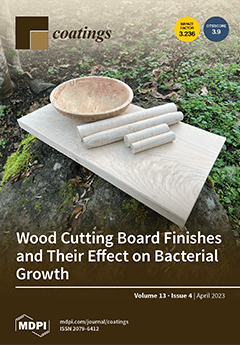Porous lead-free piezoelectric ceramics are characterized by their environment-friendly, light weight, and large specific surface area. The optimization of porous Na
0.5Bi
0.5TiO
3-based lead-free piezoelectric ceramics can improve piezoelectric properties, enhance force–electric coupling characteristics, and effectively promote energy conversion,
[...] Read more.
Porous lead-free piezoelectric ceramics are characterized by their environment-friendly, light weight, and large specific surface area. The optimization of porous Na
0.5Bi
0.5TiO
3-based lead-free piezoelectric ceramics can improve piezoelectric properties, enhance force–electric coupling characteristics, and effectively promote energy conversion, expanding the application in force-electric coupling devices. This study aimed to prepare [Sm
x(Bi
0.5Na
0.5)
1−3x/2]
0.94Ba
0.06TiO
3 (
x = 0, 0.01, 0.02, 0.03, 0.04) lead-free ceramics with porous structures, resulting in the piezoelectric constant
d33 = 131 pC/N and the plane electromechanical coupling coefficient
kp = 0.213 at
x = 0.01. The presence of pores in lead-free ceramics has a direct impact on the domain structure and can cause the depolarization process to relax. Then, the soft doping of Sm
3+ makes the A-site ion in porous (Bi
0.5Na
0.5)
0.94Ba
0.06TiO
3 ceramics occupancy inhomogeneous and generates cation vacancies, which induces lattice distortion and makes the domain wall motion easier, resulting in the improvement of piezoelectric properties and electromechanical coupling parameters. Furthermore, the piezoelectric oscillator exhibits greater resistance to resonant coupling in the radial extension vibration mode. These results infer that a combination of porosity and Sm
3+ doping renders (Bi
0.5Na
0.5)
0.94Ba
0.06TiO
3 ceramics base material for piezoelectric resonators, providing a scientific basis for their application in force–electric coupling devices, such as piezoelectric resonant gas sensors.
Full article





